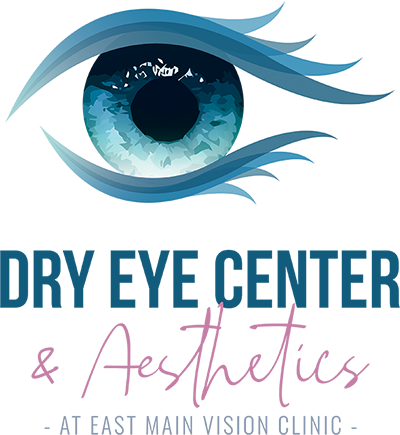February 19, 2019

Do your eyes feel dry, sore or scratchy? Do you feel like you need to blink constantly to clear your vision, or do you struggle to pay close visual attention to anything for more than a few minutes? If you can answer yes to these questions, then you may be suffering from a common ocular condition known as dry eye disease.
Many people think that the tear film that coats our eyes and enables smooth, painless movement is made from purely water. However, this isn’t the case. Instead, tear film is made from a complex combination of proteins, antibodies and important oils. Without this natural moisture, it can be very hard for our eyes to move and function as they should. Patients who are unable to make enough tear film are said to have dry eye disease.
Why does dry eye disease occur?
Dry eye disease can occur for a number of reasons. In many instances, it is a result of the natural ageing process whereby the lacrimal gland, which is responsible for producing tear film, begins to be less efficient. This means that it is producing less tear film and the eyes lose moisture.
Other potential causes of dry eye disease include:
* Taking certain medications that list dry eyes as a side effect
* Hormonal changes, such as pregnancy or menopause
* Suffering from collagen vascular disease or Sjögren’s syndrome
* A diagnosis of rheumatoid arthritis
* Damage to the eye or eyelid
* Previous laser vision correction surgery
What are the treatments for dry eyes?
While there is not currently a cure for dry eye disease, There are a number of different solutions that can alleviate the symptoms. Which is right for you will be decided during your consultation with your eye doctor. However, some of the options that you might discuss could include the following:
Eye drops
Prescription eye drops tend to be the primary solution recommended for patients with dry eyes. They imitate the natural composition of tears and can be used to lubricate the eyes and eliminate the discomfort and scratchiness associated with dry eye disease. It is important that these are administered as directed by your ophthalmologist. It may take several appointments to determine which variety and dose of prescription eye drop works best for you.
Oral medications or supplements
There are several supplements that have been shown to be beneficial in treating dry eye disease. This is because they stimulate the lacrimal gland to start producing tear film again.
Lipiflow
Lipiflow is a revolutionary new treatment for dry eyes that works by heating and massaging the lacrimal glands so that the production of tears is stimulated. Lipiflow can be performed in a single visit to your optometrist's office and can take as little as 15 minutes.
Blephex
Your eyelids can be gently debrided using an instrument called Blephex. This process allows the eyelid margins to be cleared away of debris that can cause the tear-producing glands to become blocked. This technique is so comfortable and effective it has been described by many as feeling like a spa treatment!
TrueTear
The latest and most natural treatment for dry eye is in the form of a nasal stimulator. For people who would prefer to avoid chemicals, medications, or the other dry eye treatments, the TrueTear system is a great alternative. By gently stimulating the nerve endings in the lower nasal cavity, patients are able to begin producing healthy tears naturally!
If you would like more information on dry eye syndrome, or if you suspect that you may be suffering from the condition and would like to speak to one of our expert team members, please don’t hesitate to get in touch with our vision clinic here in Puyallup, WA today.



